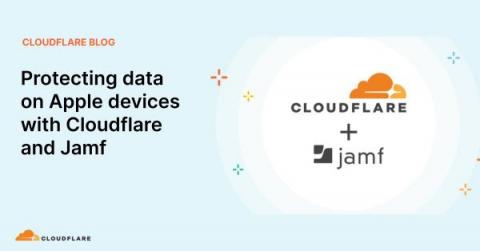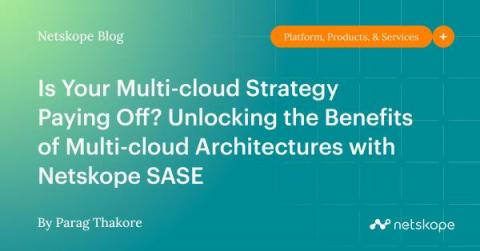Security | Threat Detection | Cyberattacks | DevSecOps | Compliance
Cloud
DSPM and CSPM: What are the Differences?
A few years back, data was constrained to the on-premise infrastructure. Data management, governance, and protection were fairly uncomplicated in this enclosed environment. The emergence of cloud computing and multi-cloud infrastructures has not only introduced more complexity in data management and governance, but it has also increased security risks significantly.
AWS Identity Center (SSO) vs. AWS Identity Federation vs. AWS IAM
Selecting an identity management solution is a critically important decision for any software organization. Identity management is a foundational component of good cloud security and can either be an enabler for scalability or a huge technical debt sink. Many organizations start with AWS by quickly throwing together their IAM infrastructure: some users, a few roles, and some policies.
Protecting data on Apple devices with Cloudflare and Jamf
Today we’re excited to announce Cloudflare’s partnership with Jamf to extend Cloudflare’s Zero Trust Solutions to Jamf customers. This unique offering will enable Jamf customers to easily implement network Data Loss Prevention (DLP), Remote Browser Isolation (RBI), and SaaS Tenancy Controls from Cloudflare to prevent sensitive data loss from their Apple devices.
8 Serverless Security Best Practices for Any Cloud
Time, cost, and quality – hitting this trifecta is the ultimate goal of any software organization. Its pursuit over decades has resulted in multiple application development methodologies like serverless computing, an emerging and popular cloud computing model touted as the future. Nearly 70% of organizations will increase their usage of serverless computing by 2025.
Is Your Multi-cloud Strategy Paying Off? Unlocking the Benefits of Multi-cloud Architectures with Netskope SASE
Should we be using multiple public cloud providers? As organizations continue to migrate applications and workloads to public cloud platforms, they often face the tough decision of sticking with a single provider or embracing multiple clouds. Using multiple cloud providers promises a variety of benefits including the ability to minimize vendor lock-in, leverage best-of-breed services, achieve cost advantages, and comply with data sovereignty rules.
An Invitation to Change: Introducing the SecOps Cloud Platform
The Future of the Firewall is in the Cloud
I read with some surprise the interview with Zscaler’s CEO, Jay Chaudry, in CRN where he stated that the “network firewalls will go the way of the mainframe,” that “the network is just plumbing” and that Zscaler proxy overlay architecture will replace it with its “application switchboard.” Well, our joint history in network security teaches us a very different lesson. This is my take.
DDoS threat report for 2023 Q2
Welcome to the second DDoS threat report of 2023. DDoS attacks, or distributed denial-of-service attacks, are a type of cyber attack that aims to disrupt websites (and other types of Internet properties) to make them unavailable for legitimate users by overwhelming them with more traffic than they can handle — similar to a driver stuck in a traffic jam on the way to the grocery store.











